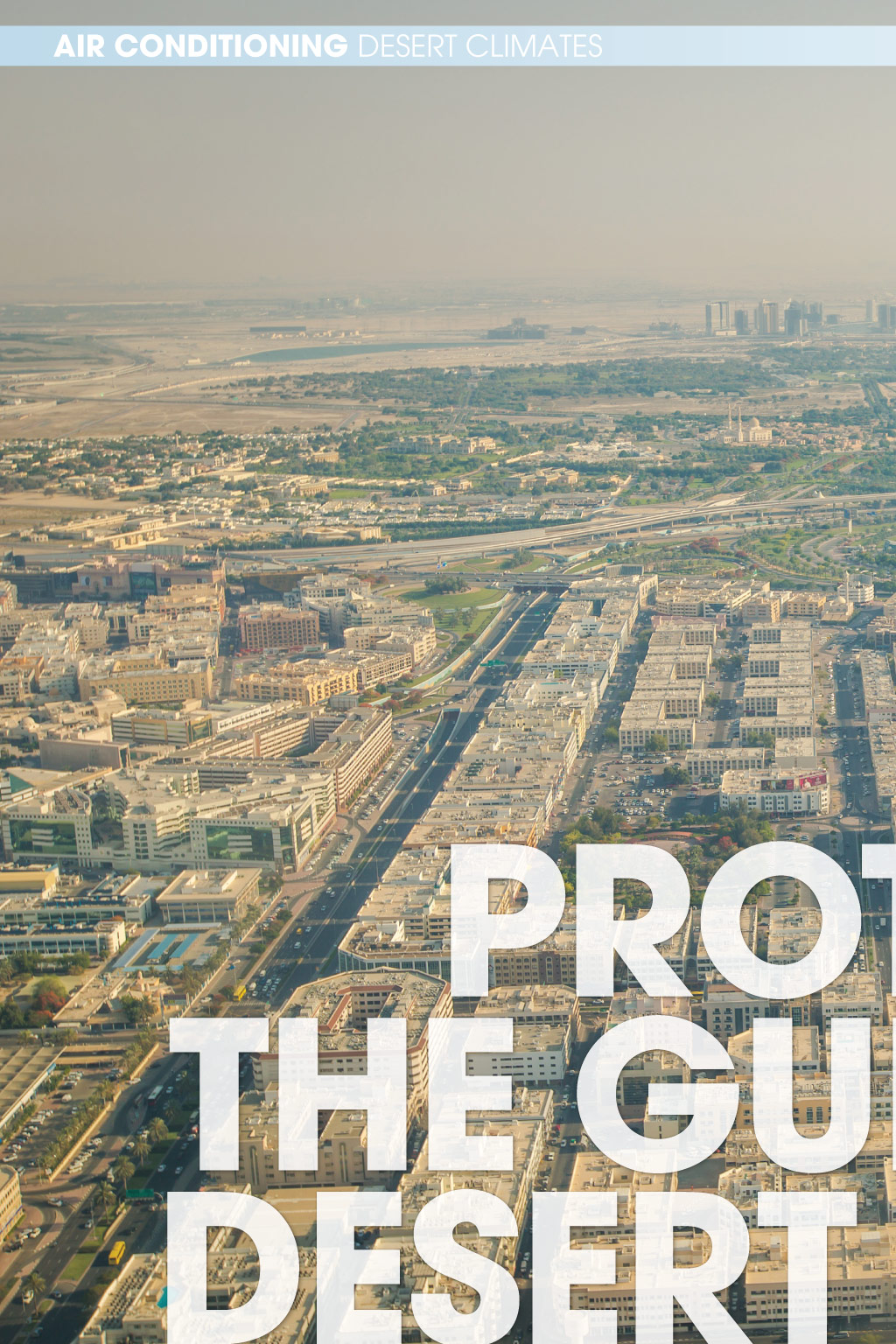

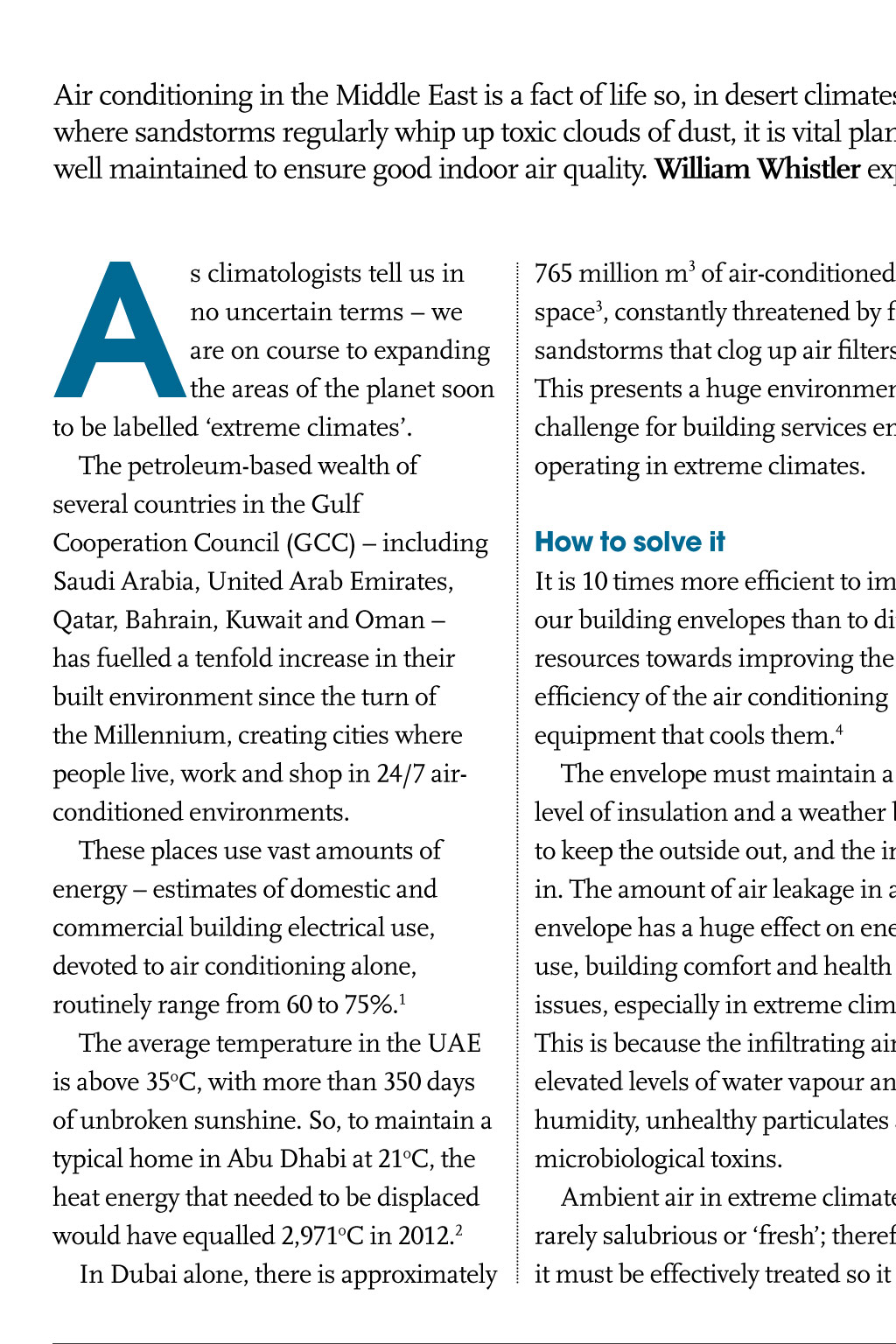

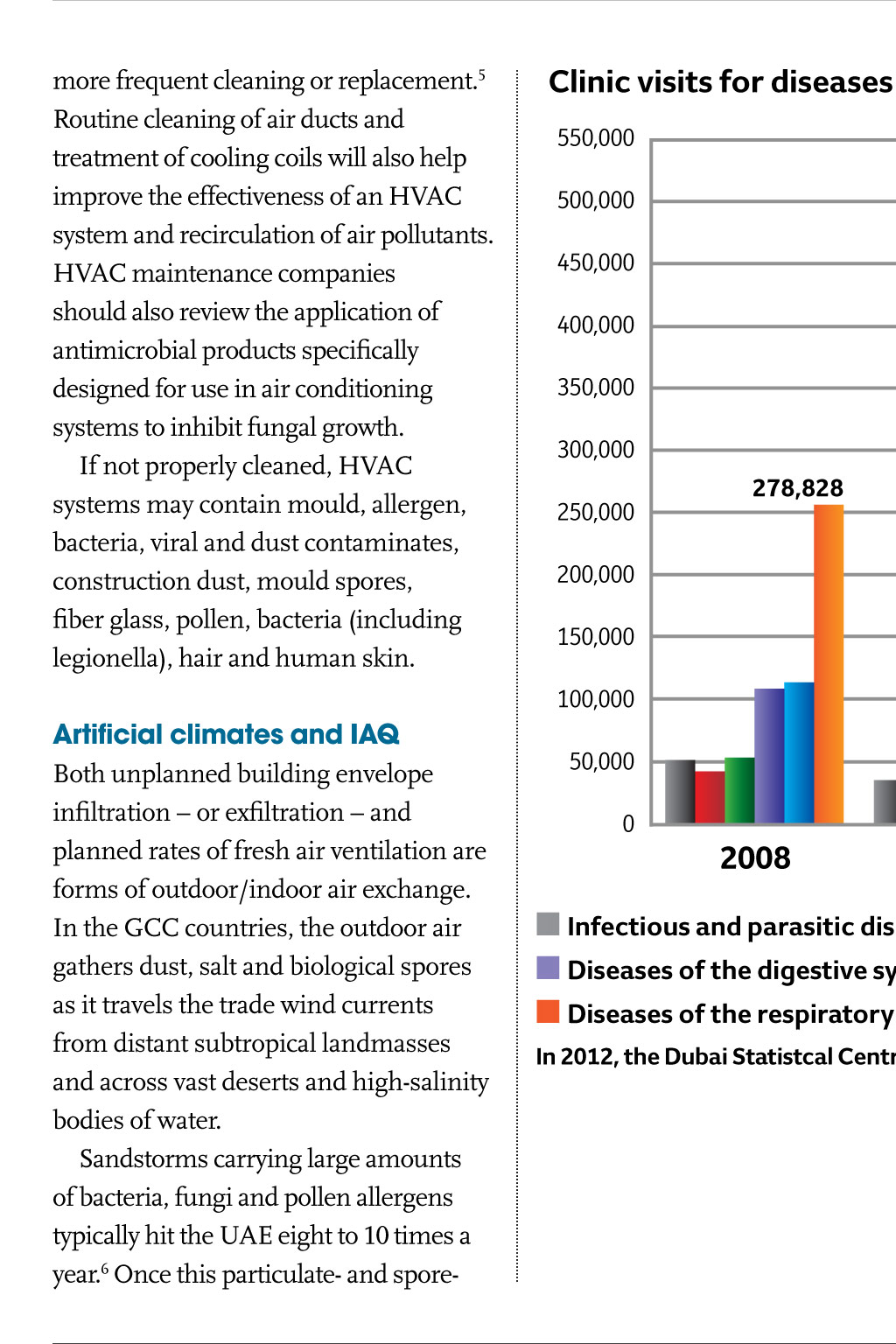
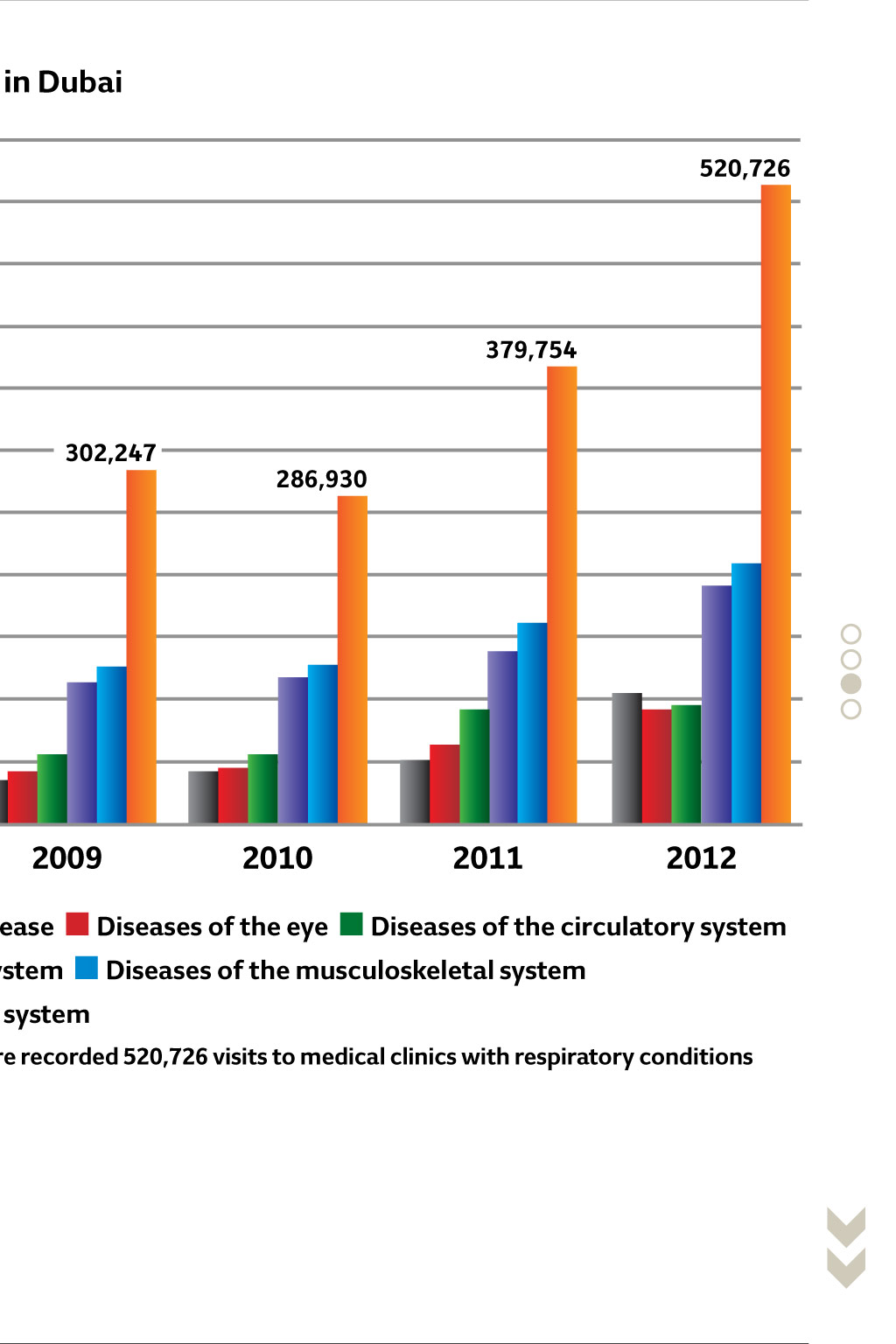
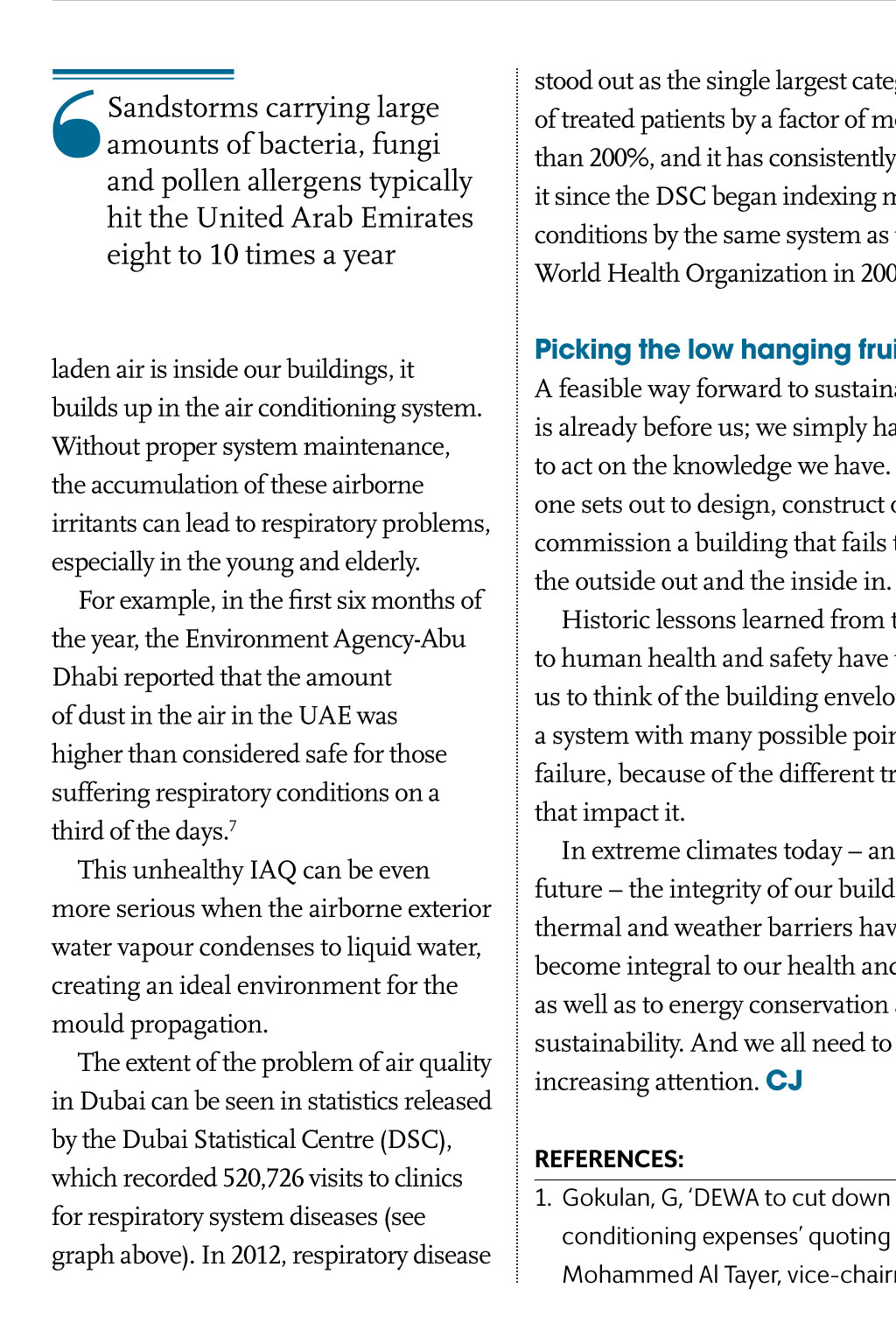









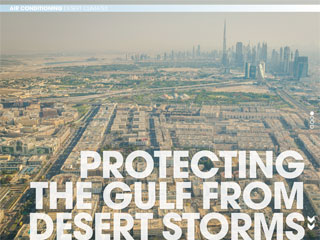
Air Conditioning Desert climates 2015 tecHnical sYmPosiUm William Whistler presented a paper on this topic at the 2014 Technical Symposium. The 2015 event takes place at UCL, London, on 16-17 April. For more details visit www.cibse.org/symposium PROTEcTing ThE gulF FROM dESERT STORMS restore the oxygen supply and thermal comfort. Air conditioning in the Middle East is a fact of life so, in desert climates where sandstorms regularly whip up toxic clouds of dust, it is vital plant is well maintained to ensure good indoor air quality. William Whistler explains A s climatologists tell us in no uncertain terms we are on course to expanding the areas of the planet soon to be labelled extreme climates. The petroleum-based wealth of several countries in the Gulf Cooperation Council (GCC) including Saudi Arabia, United Arab Emirates, Qatar, Bahrain, Kuwait and Oman has fuelled a tenfold increase in their built environment since the turn of the Millennium, creating cities where people live, work and shop in 24/7 airconditioned environments. These places use vast amounts of energy estimates of domestic and commercial building electrical use, devoted to air conditioning alone, routinely range from 60 to 75%.1 The average temperature in the UAE is above 35oC, with more than 350 days of unbroken sunshine. So, to maintain a typical home in Abu Dhabi at 21oC, the heat energy that needed to be displaced would have equalled 2,971oC in 2012.2 In Dubai alone, there is approximately more frequent cleaning or replacement.5 Routine cleaning of air ducts and treatment of cooling coils will also help improve the effectiveness of an HVAC system and recirculation of air pollutants. HVAC maintenance companies should also review the application of antimicrobial products specifically designed for use in air conditioning systems to inhibit fungal growth. If not properly cleaned, HVAC systems may contain mould, allergen, bacteria, viral and dust contaminates, construction dust, mould spores, fiber glass, pollen, bacteria (including legionella), hair and human skin. 765 million m3 of air-conditioned indoor space3, constantly threatened by frequent sandstorms that clog up air filters. This presents a huge environmental challenge for building services engineers operating in extreme climates. how to solve it It is 10 times more efficient to improve our building envelopes than to direct resources towards improving the efficiency of the air conditioning equipment that cools them.4 The envelope must maintain a certain level of insulation and a weather barrier to keep the outside out, and the inside in. The amount of air leakage in an envelope has a huge effect on energy use, building comfort and health issues, especially in extreme climates. This is because the infiltrating air has elevated levels of water vapour and humidity, unhealthy particulates and microbiological toxins. Ambient air in extreme climates is rarely salubrious or fresh; therefore it must be effectively treated so it can eor Rmade 2015 tecHnical sYmPosiUm The vital role of hvAc hygiene As the lungs of a building, heating, ventilation and air conditioning systems recycle air, maintaining temperature and indoor air quality (IAQ). Design basics, such as keeping a minimum distance between exhaust air and fresh air intakes, and ensuring the building is under positive pressurisation, are typical steps in reducing unwanted infiltration that might cause condensation and bacterial growth. However, these can be and often are over-relied on; simply overpressurising a building by 6-10% will not guarantee the indoor air will remain infiltration-free. Some of the real-time conditions that will affect the thermal comfort and health of a building if the envelope fails to be an integral thermal and weather barrier are: hygiene, positive pressurisation, system depressurisation, wind pressurisation, and air conditioning system imbalance. Air contaminates may settle within the HVAC system, challenging the filters. Consequently, the lifespan of these air filters is shortened, requiring Clinic visits for diseases in dubai 550,000 520,726 500,000 450,000 400,000 379,754 350,000 300,000 250,000 302,247 278,828 286,930 200,000 150,000 100,000 Artificial climates and iAQ Both unplanned building envelope infiltration or exfiltration and planned rates of fresh air ventilation are forms of outdoor/indoor air exchange. In the GCC countries, the outdoor air gathers dust, salt and biological spores as it travels the trade wind currents from distant subtropical landmasses and across vast deserts and high-salinity bodies of water. Sandstorms carrying large amounts of bacteria, fungi and pollen allergens typically hit the UAE eight to 10 times a year.6 Once this particulate- and spore- Sandstorms carrying large amounts of bacteria, fungi and pollen allergens typically hit the United Arab Emirates eight to 10 times a year 50,000 0 2008 2009 2010 2011 2012 Infectious and parasitic disease diseases of the eye diseases of the circulatory system diseases of the digestive system diseases of the musculoskeletal system diseases of the respiratory system In 2012, the dubai Statistcal Centre recorded 520,726 visits to medical clinics with respiratory conditions stood out as the single largest category of treated patients by a factor of more than 200%, and it has consistently done it since the DSC began indexing medical conditions by the same system as the World Health Organization in 2007.8 the Dubai Supreme Council of Energy and CEO of Dubai Electricity and Water Authority. 2. Degree Days.net Custom Degree Day Data for Abu Dhabi International Airport viewed 2 February 2014 www.degreedays.net laden air is inside our buildings, it builds up in the air conditioning system. Without proper system maintenance, the accumulation of these airborne irritants can lead to respiratory problems, especially in the young and elderly. For example, in the first six months of the year, the Environment Agency-Abu Dhabi reported that the amount of dust in the air in the UAE was higher than considered safe for those suffering respiratory conditions on a third of the days.7 This unhealthy IAQ can be even more serious when the airborne exterior water vapour condenses to liquid water, creating an ideal environment for the mould propagation. The extent of the problem of air quality in Dubai can be seen in statistics released by the Dubai Statistical Centre (DSC), which recorded 520,726 visits to clinics for respiratory system diseases (see graph above). In 2012, respiratory disease Picking the low hanging fruit A feasible way forward to sustainability is already before us; we simply have to act on the knowledge we have. No one sets out to design, construct or commission a building that fails to keep the outside out and the inside in. Historic lessons learned from threats to human health and safety have taught us to think of the building envelope as a system with many possible points of failure, because of the different trades that impact it. In extreme climates today and in future the integrity of our buildings thermal and weather barriers have become integral to our health and safety, as well as to energy conservation and sustainability. And we all need to pay increasing attention. cJ 3. Dubai Housing and building reports http://bit.ly/19vXWc1 4 Pathways to a Low- Carbon Economy, McKinsey & Company, 2009 5. Todorova V, UAE weather: Warning over dust levels in the air as vulnerable told to stay indoors, The National, 16 June 2013. 6. Sandstorms in the GCC bring air filtration into sharp focus, CPI Industry News, viewed 11 November 2013, http://bit.ly/1Mx8maC 7. Yeatts K, El-Sadig M, Leith D, Kalsbeek W, Al-Maskari F, Couper D, Funk W, Zoubeidi T, Chan R, Trent C, Davidson C, Boundy M, Kassab M, Hasan M, Rusyn I, Gibson J and Olshan A, Indoor Air Pollutants and Health in the United Arab Emirates, Environmental Health Perspectives, 2012 May, 120(5): 687694 8. Patients at Medical Private Sector Hospitals by International Classification of Diseases REFERENCES: 1. Gokulan, G, DEWA to cut down airconditioning expenses quoting Saeed Mohammed Al Tayer, vice-chairman of Emirate of Dubai http://bit.ly/1Eo9dEY WILLIAM WHISTLER is managing director at Green Building Solutions International, Dubai "